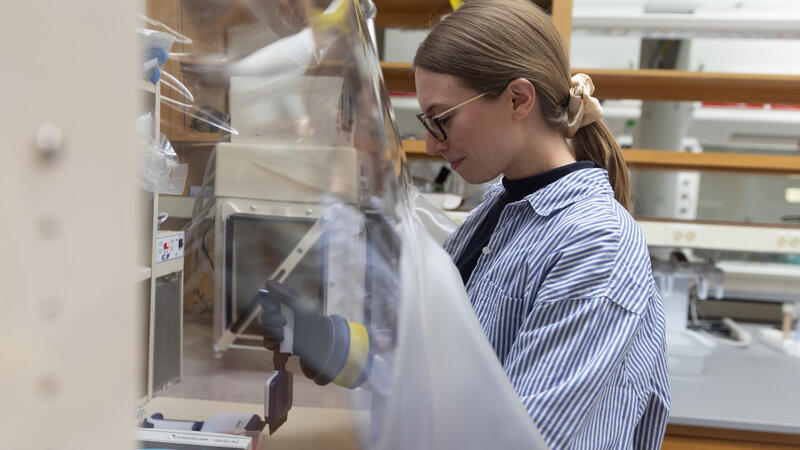News
Amy Enright wins GLBRC early career award
David Rothamer
GLBRC engine researcher David Rothamer explains what ethanol is and why it's a good fuel.
Doug Landis
Great Lakes Bioenergy Research Center (GLBRC) project area leader Doug Landis talks about biodiversity, why it's important, and why our researchers are looking at how it'll affect the biofuels industry as a whole.
Imagine if farmers could grow plants, press their seeds to extract oil, and use that oil to sustain their farm operations rather than relying on fossil fuels. Building on ten years of research and collaboration, scientists at the Great Lakes Bioenergy Research Center (GLBRC) have isolated an enzyme that brings this scenario one step closer to reality.
Steve Slater
Scientific Programs Manager Steve Slater explains the role of the Great Lakes Bioenergy Research Center (GLBRC).
When a 100-ton supply of feedstock arrives at the biorefinery of the future, the plant manager could open the door to find cellulosic biomass in any number of forms — from corn stover to switchgrass to poplar or miscanthus or mixed prairie grasses and forbs.
For thousands of years, beer and wine lovers have been thankful for yeast, the ethanol-producing microbe that makes their favorite fermented beverages possible. Now, scientists at the Great Lakes Bioenergy Research Center (GLBRC) are working to improve yeast strains that could help make better biofuels.
For most, the ideal summer vacation does not include donning lab goggles, performing hands on field research or analyzing data. The teachers who participated in the 2010 Great Lakes Bioenergy Research Center (GLBRC) Bioenergy Institute for Educators, however, looked forward to being students again.
Entomologists have a long history in agriculture, offering expertise on biological control, insect-plant interactions, and integrated pest management. Now entomologists are being called upon to help design best practices in bioenergy crop systems.
At the front of her classroom, Rhonda Knapp holds up beakers full of decomposing biomass, explaining how enzymes are working to break down the material.
MADISON – The March issue of BioEnergy Research exclusively focuses on the U.S. Department of Energy-funded Great Lakes Bioenergy Research Center (GLBRC) and bioenergy research topics ranging from arthropods to cell walls to hydrogen and enzyme improvement.




